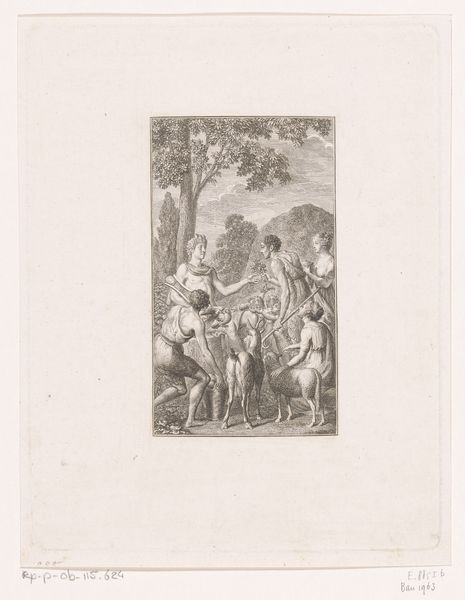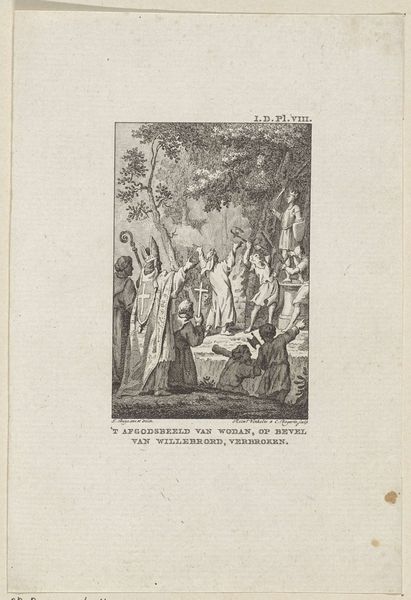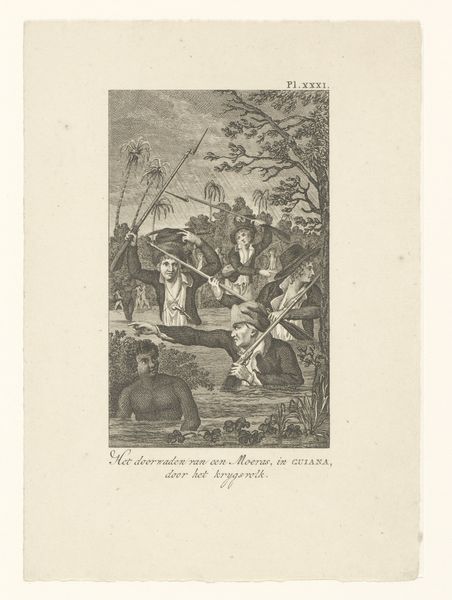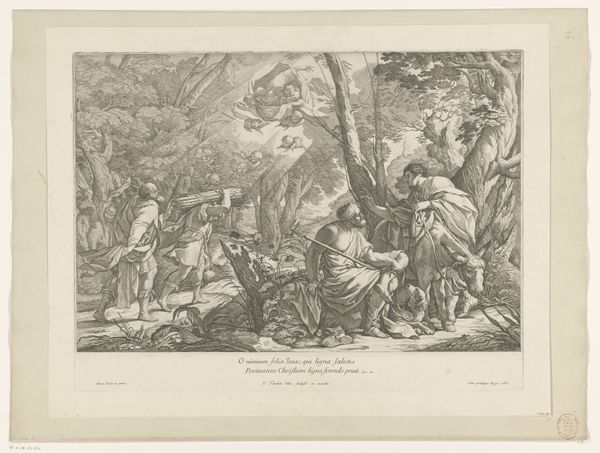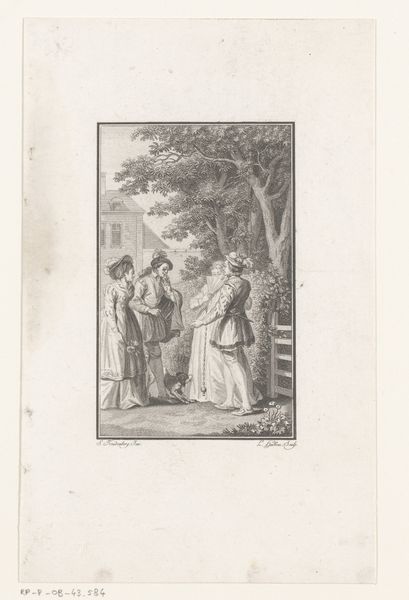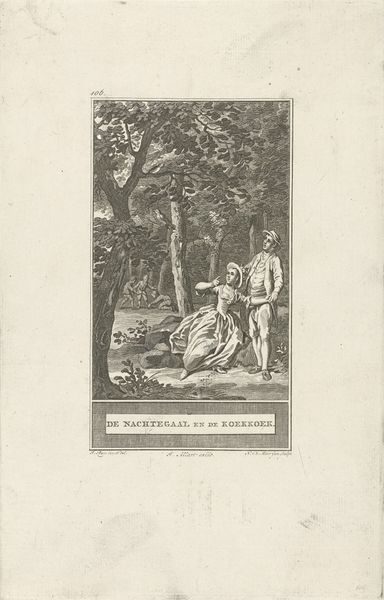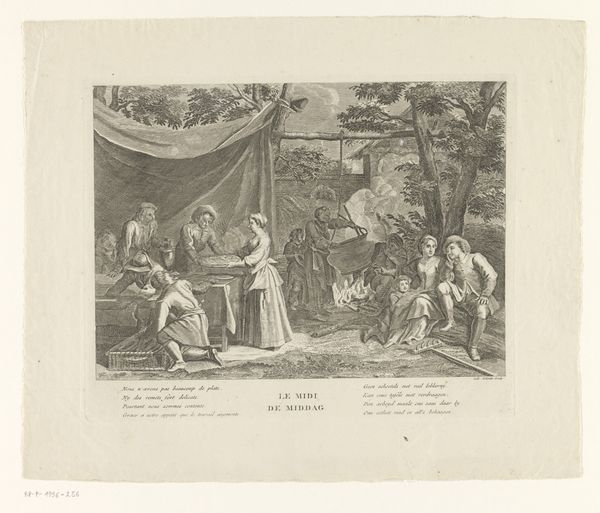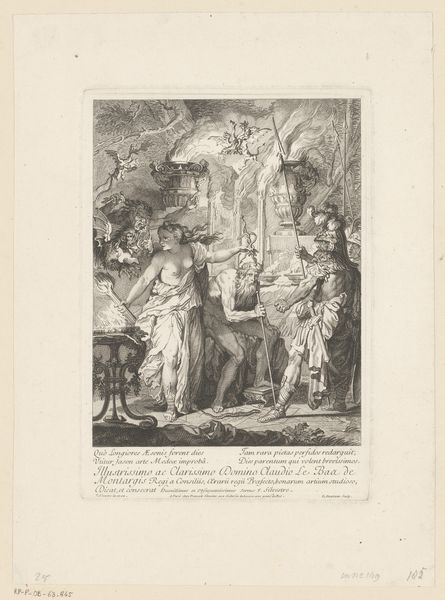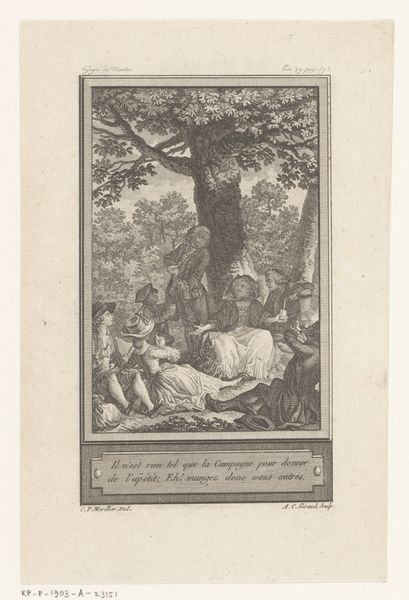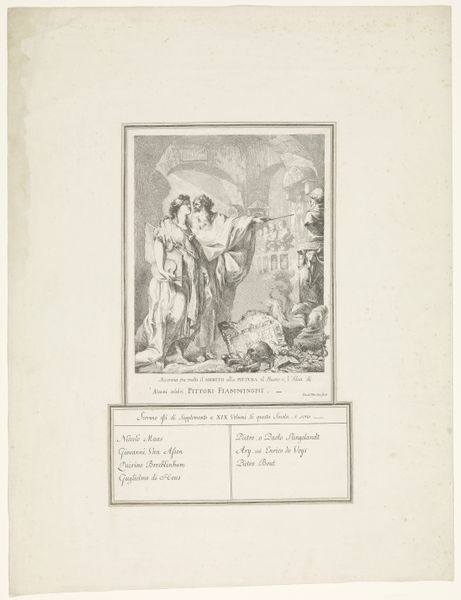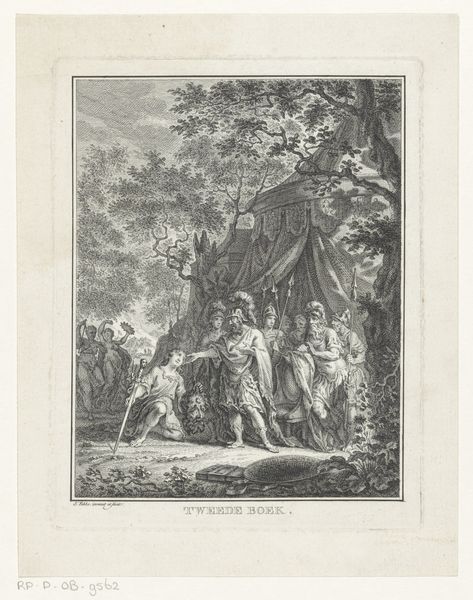
Dimensions: height 286 mm, width 200 mm
Copyright: Rijks Museum: Open Domain
Curator: Here we have "Allegory on the Birth of William II," an engraving dating back to the 19th century, now held at the Rijksmuseum. It appears to be an intricate scene with multiple figures under a fruit-laden tree. Editor: My first impression is that it feels rather grand, but the grey values make it seem aged. The tree almost serves as a canopy, and everyone seems caught up in a moment of orchestrated importance. Curator: Indeed. Given the artwork’s title and its allegorical theme, the scene is rich in symbols intended to communicate ideas about power, legacy, and possibly, divine favor. We should delve deeper into the identities of the people. Who exactly is little Willem in relation to everyone? What's his stake within the picture and what are its visual motifs? Editor: It's interesting that you mention "legacy". The prominent fruit tree immediately suggests fertility, abundance, and familial heritage, especially the regal figures nestled beneath it. I’m also drawn to the Cupid-like figures presenting the wreath. Is the family meant to echo stories from mythology or the Bible? It is all tied up in religious symbolism of providence. Curator: It is most likely building on the notion of inherited status. To reinforce that theme of legitimacy, the familial shield in the branches serves as a dynastic claim, perhaps addressing succession and power dynamics in 17th-century Netherlands. How does that resonate today, and what kind of commentary might it inspire around issues of birthright? Editor: Today, many may question this seemingly divine and patriarchal framing, perceiving it as an anachronistic endorsement of entrenched privilege. Though historical contexts may shape our interpretations of art, its message can take on new dimensions as social norms shift. I also wonder if the imagery itself has precursors, maybe earlier depictions of familial trees in other works. Curator: Considering all we’ve examined, from the baroque theatricality to its symbolic load, and its afterlife in public consciousness, the engraving serves as an invaluable document and provocation, a window onto power, both past and present. Editor: Precisely. Seeing how symbols of family and power continue to shift in meaning allows us to look closer at the structures that art, consciously or not, helps solidify and sometimes destabilize.
Comments
No comments
Be the first to comment and join the conversation on the ultimate creative platform.
